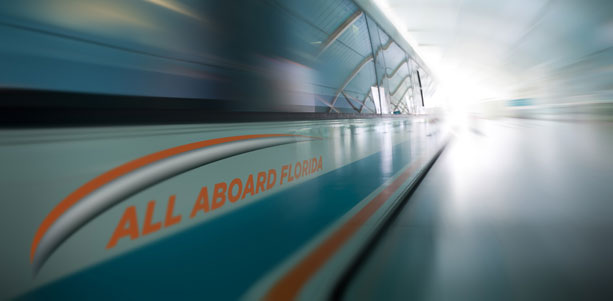Passenger Trains: A Cancer in Florida that Keeps Growing
I guess as children we all loved playing with trains. Why this has become a fascination as adult taxpayers is hard to understand. It’s probably because we don’t look behind the curtain to see what this habit is costing society. Once you do the investigation, it turns out that passenger trains are consistent in one area only, eating up taxpayer dollars.
All Aboard Florida (AAF) is the newest passenger line being presented as an investor backed privately funded entity. It is difficult to understand why a private company as big as Florida East Coast Industries, and with their knowledge of the business, would follow the public sector into this debt laden industry. Their plan is for a high-speed passenger train to service Miami, Fort Lauderdale, West Palm Beach and Orlando. We already have passenger trains that service this route, their names are AMTRAK and Tri-Rail. Let’s examine their profitability for the 2013 operating year.
AMTRAK has state supported routes and long distance routes, that service most of the major areas of the United States. Examining their FY 2013 Budget Statics by Route we note that they have fifteen (15) long distance routes. The one thing that is consistent with all of these long distance routes is that they all lose on average Forty-Million dollars ($40,000,000) per route each year. Just the long distance routes create a Six-Hundred Million dollar ($600,000,000) loss every year.
One of these passenger routes is the Auto Train, which is familiar to citizens in Florida. This route lost Forty-Eight Million dollars ($48,000,000) in 2013 an average of One-Hundred, Eighty dollars ($180.00) lost for every passenger who traveled on the Auto Train. This route does show employment of 34 core employees. That equals out to a loss of One Million, Four-Hundred, Twelve-Thousand ($1,412,000) per employee!
AMTRAK does better on its state supported routes. It only looses One-Hundred Million dollars ($100,000,000) per year on these operations. One of these state supported lines is the Silver Star that provides services to Miami, Fort Lauderdale, West Palm Beach and Orlando. In 2013 they had revenue on this route of Thirty-Nine Million ($39,000,000) and expenses of Eighty-Six Million ($86,000,000) for a loss of Forty Seven Million dollars ($47,000,000).
Where does the money come from to support these heavy losses? According to their 2013-2017 projected operating summary, AMTRAK received Four-Hundred, Fifteen Million dollars ($415,000,000) from Federal Appropriation Support otherwise known as TAXPAYER SUPPORT. Look at the bright side, their projections are for a Two-Billion dollar ($2,000,000,000) loss over the next five years! At least they are leveling off at a consistent loss every year into the future.
The other train that services south Florida with passenger service is Tri-Rail. Tri-Rail does not go to Orlando but it will compete with All Aboard Florida for the passengers who travel Miami-Dade, Broward and Palm Beach. How well has Tri-Rail been doing? Let’s examine their 2013 revenue and expenses.
Tri-Rail had a 3% increase in revenue in 2013 bringing total operating revenue to Twelve-Million, Five-Hundred Seventy-Five Thousand, Six-Hundred Fifty-Two dollars ($12, 575,652). That’s the good news. The bad news is they had total operating expenses of One-Hundred Million, Two-Hundred Forty-Nine Thousand, Six-Hundred Fifty-Eight dollars ($100,249,658) for an operating loss of $87,674,006. To be fair it should be noted that $30,214,462 of this loss is attributed to depreciation of assets, so the true loss for Tri-Rail is only Fifty-Eight Million dollars ($58,000,000).
The good news about this statement is we can track where Tri-Rail balances its budget. Non-Operating Revenue allows Tri-Rail to continue to operate. Where does this non-operating revenue come from? THE TAXPAYER! Here is the breakdown:
- Federal Transit Administration (FTA) $19,163,234
- Federal Highway Administration 4,000,000
- Florida Department of Transportation (FDOT) 30,613,700
- Other Local Funding 184,795
- Broward County 1,565,000
- Miami-Dade County 1,565,000
- Palm Beach County 1,565,000
- Interest Income 139,080
- Total Non-Operating Revenue $58,795,809
What a way to break even. It’s nice to know that you get the support of federal, state and local tax dollars to run your train. How much would just the Tri-Rail loss buy in better education, emergency services, medical advances or other areas that service our citizens.
By the way, did someone mention that a private investment group wants to get into the train business because they want to make a profit? I know I heard that somewhere. The only profit is in raiding the public coffers.


